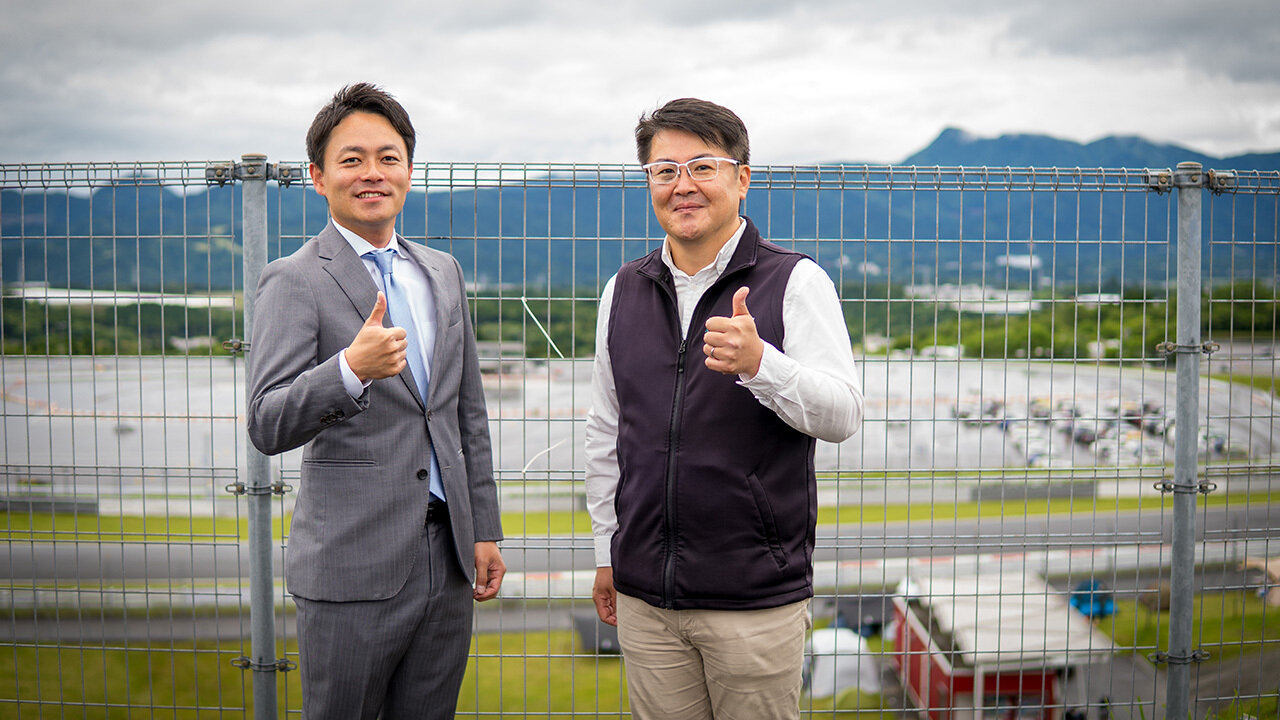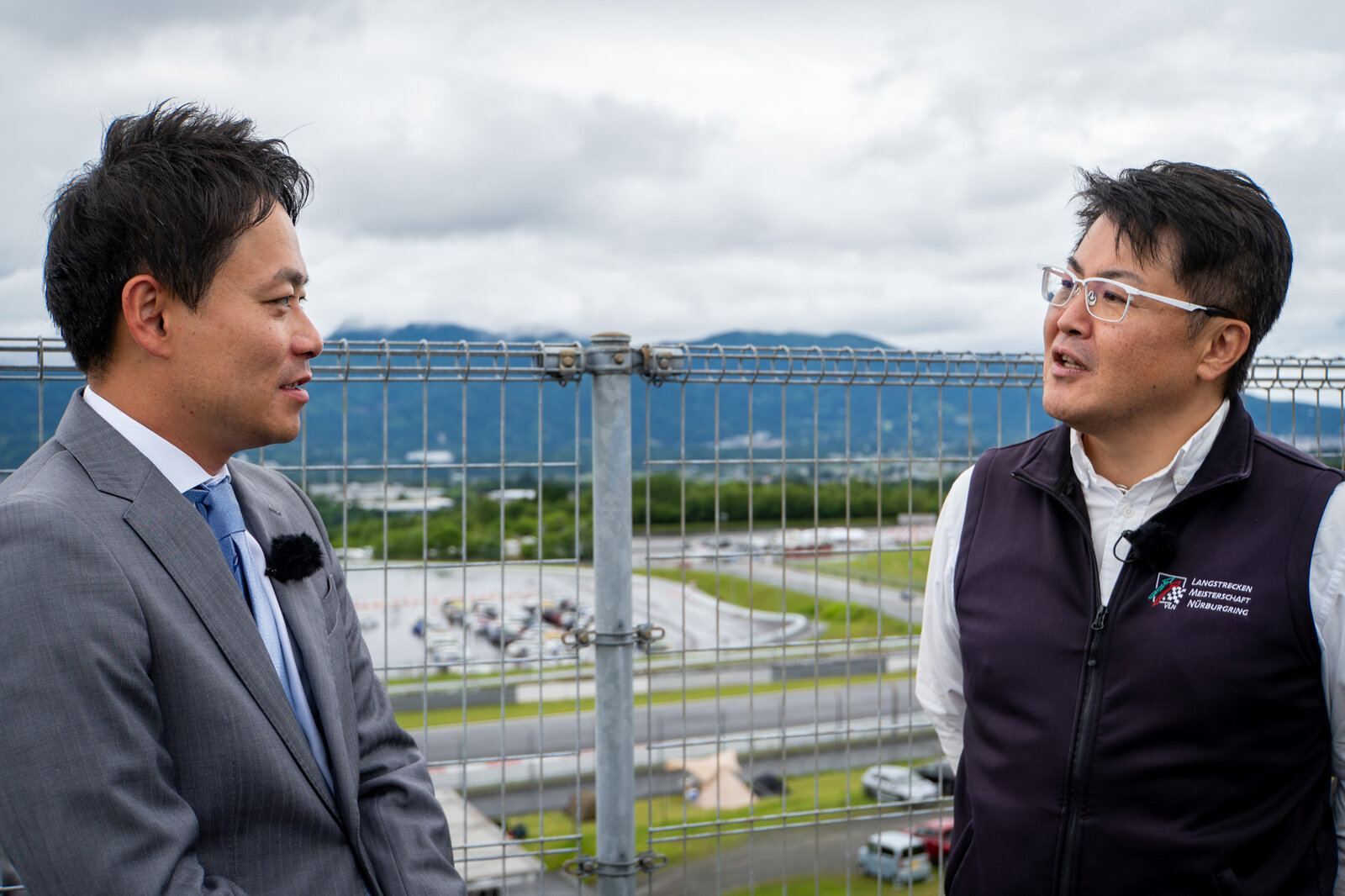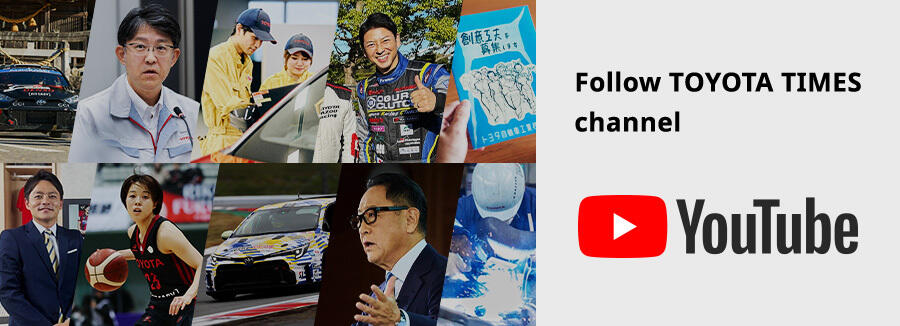
The hydrogen-engine Corolla is racing in the Fuji 24 Hours for its fifth straight year. Once again, we asked automotive analyst Shinya Yamamoto to provide a rundown of the attempt.
This time, we gathered again after dark, sitting around a fire in the Fuji Speedway camp area. Automotive journalist Yuki Imai also joined the festivities to discuss how to cultivate a motorsports culture.

In 2025, the hydrogen-powered Corolla marks its fifth year of competing in 24-hour endurance races. The event has become part of the history of Toyota’s hydrogen engine endeavors.
Automotive analyst Shinya Yamamoto has followed the entire journey from trackside. Every year, Toyota Times catches up with Yamamoto for an interview, and every year he offers a memorable take that pithily captures how things stand.
In the first year, he described the engine’s impact as "a catalyst that unleashed our dreams."
In year two, in light of the shift in public sentiment toward electric vehicles, Yamamoto emphasized that internal combustion engines are “our allies in achieving carbon neutrality.”
By the third year, Toyota had taken on the challenge of liquid hydrogen, and these efforts were increasingly being recognized as an option for pursuing carbon neutrality. Speaking about the growing number of like-minded manufacturers working together in Super Taikyu, Yamamoto noted that “everyone can now speak openly.”
In the fourth year, as improvements to the pump and tank extended range by 50% and brought the Corolla on par with rival cars, Yamamoto remarked that "the summit is in sight."
Now, with the hydrogen challenge in its fifth year, how does Shinya Yamamoto describe the state of progress? Once again, on the morning of the 24-hour race, Kyonosuke Morita—clad in that very same suit—caught up with Yamamoto in his usual spot overlooking Fuji Speedway.
Hydrogen engine development reaches culmination of first half

Morita
Same place, same familiar figure. Shinya Yamamoto, good morning.
Yamamoto
Good morning. Has it already been a year?
Morita
So it seems. I’m back in the same suit again this year.
And you haven’t changed… except your glasses?
Yamamoto
The 2025 model.
Morita
You bought a new pair?
Yamamoto
Yes.
Morita
What’s different?
Yamamoto
I got them colored. Custom order.
Morita
Thank you for the update.
Let’s jump straight to it—the hydrogen engine started out in 2021, which makes this the fifth year.
Yamamoto
A lot has happened.
Morita
Time has flown.
Yamamoto
That first year was so nerve-wracking. Well, I guess the nerves are still there now, in a different way.
Morita
This has become our fixed point of reference—same place, same outfits, coming here to ask Shinya Yamamoto about the hydrogen engine’s evolution.
Hydrogen engine year five, liquid hydrogen year three. What is the challenge this year?
Yamamoto
In a sense, this year really feels like the culmination of the first half.
Morita
First half…? To begin, where do you divide the first half and second half?
Yamamoto
We started with gaseous hydrogen, then came liquid hydrogen. From here, we’re going to see evolution in areas such as the pump and tank, which I think will radically transform the entire package further down the line.
The team will need to take a different development approach from the cars that came before, so I feel like what we have now is close to the culmination of the current package.
Morita
Which means we are around the final stages of the first phase?
Yamamoto
Some people want to talk about which station we’ve reached on the path to commercialization—what “station” we’re at. But that’s not how I see it. I feel like we’ve reached the culmination of the first half of the development journey.
The first year was about increasing power output, wasn’t it? But the car needed more range, so the team pursued liquid hydrogen.
Then it became a question of durability in the pump that draws the liquid hydrogen. In the second year, we were looking to see if the car could complete the 24 hours, but then it ran into a different problem.
Morita
Last year, for the first time, it seemed like they wouldn’t be able to finish the race.
Yamamoto
Last year I also made some grandiose predictions that didn’t work out.
Which means the pump’s durability, whether it can last 24 hours, has not yet been proven in a race.
Morita
So even though the pump didn’t cause problems, it hasn’t been tested through the full 24 hours.
Yamamoto
We’ve heard that it looks good on paper, but that hasn’t been demonstrated in a race. Which means this year is a chance to prove the pump over 24 hours.
Morita
When we met here last year, you expressed the situation in many different ways.
At that time, you said that “the summit is in sight.” Yet from there the going got tough. Given that, how would you describe the challenge this year?
Yamamoto
It turns out the summit wasn’t really the summit. We get closer, then we pull away again.
Perhaps we are within sight for certain technologies, while in others there have been setbacks. That’s what makes it so difficult.
But there’s no way to know that unless you carry on with development. By continuing on, we may have caught a glimpse of the mountaintop, but pressing on further has given us the perspective to see that it was actually a different mountain.
Nürburgring: the final exam
Morita
In terms of perspective, you could look at last year’s trouble and conclude, for example, that the problem was ABS, while the hydrogen engine appears to be progressing well. What do you think?
Yamamoto
This shows that last year the team worked too hard on the hydrogen engine, while the car as a whole was lacking in some areas.
The fact is that you want to develop the hydrogen engine, but if problems in the rest of the car stop you from being able to demonstrate the engine’s ability, then the overall package is not serving its purpose.
Morita
So, they were looking too far ahead and got tripped up by something underfoot?
Yamamoto
I also think they were overly focused on one thing. Morizo often talks about taking a multifaceted approach, but everyone was focused solely on the hydrogen engine. The result is that, while I wouldn’t quite say the car is incomplete, it wasn’t able to run the full race.
Morita
Which means that this year will be about going back to the starting point. In doing so, this year the team will not only continue its Super Taikyu efforts but also return to its roots at the Nürburgring.
Yamamoto
In a few weeks, this same team will be heading to the Nürburgring 24 Hours, but with a different car—the GR Yaris DAT. So then the question is, why take on two endurance races?
Morita
Two 24-hour races in such a short time span. That’s a tough task, isn’t it?
Yamamoto
Essentially, the Super Taikyu 24-hour race serves as a platform for testing out new technologies. Meanwhile, the Nürburgring 24 Hours is about tackling the world’s most demanding course. In a way, if you can’t complete that race, you can’t say you’ve passed the final graduation exam. Nürburgring serves as that final exam.
Morita
And the hydrogen engine is not yet at the stage of taking that final exam, is it?
Yamamoto
In those terms, it probably hasn’t even taken the entrance exam yet. At the moment, we’re in something like prep school.
Morita
When you put it like that, having both these places is incredibly important, isn’t it?
Yamamoto
Competing in both of them is terrific.
While there are some things only Fuji Speedway can teach you, you can’t learn everything here. The same is true for Nürburgring. So having that crossover helps you identify different issues, as well as solutions.
Morita
Indeed, Morizo said the same thing: “Super Taikyu is Super Taikyu, Nürburgring is Nürburgring—that’s the wrong way of thinking. They’re connected.” The two work in tandem as places that drive ever-better carmaking.
Yamamoto
Hiromu Naruse used to say that the more places you drive, the better the car becomes.
To hone a car on the road, you need all kinds of roads—you need to drive in many different places.
Morita
So, the sense I get is that carmaking itself is evolving.
The ivory tower rears its head again
Yamamoto
However, looking at the practice runs and qualifying, that isn’t the case in some areas.
Morita
You mean it’s not evolving… is that right?
Yamamoto
I have to give some harsh feedback, as a third party.
Morita
Really?! Getting tough. What is it?
Yamamoto
I glimpsed a return to the “ivory tower” days.
Morita
Ivory tower—we’ve heard that before.
The “ivory tower” was how Chairman Akio Toyoda referred to Toyota’s engineering division, which proved difficult to communicate with during his presidency.
LINK: NewsPicks Hacks Toyota Times—Is Toyota's Engineering Division an Ivory Tower?
Yamamoto
Several issues arose during the test runs, and yet the engineers told Morizo those forbidden words: “The data shows no problems.
Sure enough, when they investigated, the data turned out wrong. For the engineers, I think this brought home the need to see the car with your own eyes, make decisions, and check them with your own hands. That’s the very starting point of car development.
Morita
The realization happens, you stop, and then restart, returning to that fundamental mindset. That’s crucial.
Yamamoto
This 24-hour race may be a return to those fundamentals. The same team will be going to Nürburgring, and you can’t have the same thing happening over there. Perhaps it’s a blessing in disguise that they discovered it in Super Taikyu.
Of course, it’s not a matter of one being more important than the other; they just happen to be going from Super Taikyu to Nürburgring. But whether it’s the STMO, Super Taikyu MIRAI Organization, or development, I think you should be looking to create that same process.
There’s no sense in making the same mistakes as Super Taikyu at Nürburgring, is there? That’s the kind of thing I want to look out for this time around.
Morita
Once again, there are many different aspects to watch this year. Are you here for the full 24…?
Yamamoto
I am. I’m doing the night shift as well.
Morita
No sleep?
Yamamoto
No sleep. I’ve always said that, so I can’t back out now.
But even more than that, if I wasn’t here at the circuit, I would be too excited and restless to sleep at the hotel. I’d end up coming back anyway, so I’m better off staying here for the long haul.
Morita
But you know, this is our fifth year, which means we’re that much older.
Yamamoto
Still, this is something I need to do. It’s my life’s work. I will keep doing it for as long as I can.
Morita
All right, so this is our endurance race. Let’s do it!
In past years, the pair’s annual update on the hydrogen engine would have ended there, but three hours into the race Shinya Yamamoto also joined our Toyota Times live broadcast from RECAMP Fuji Speedway.

